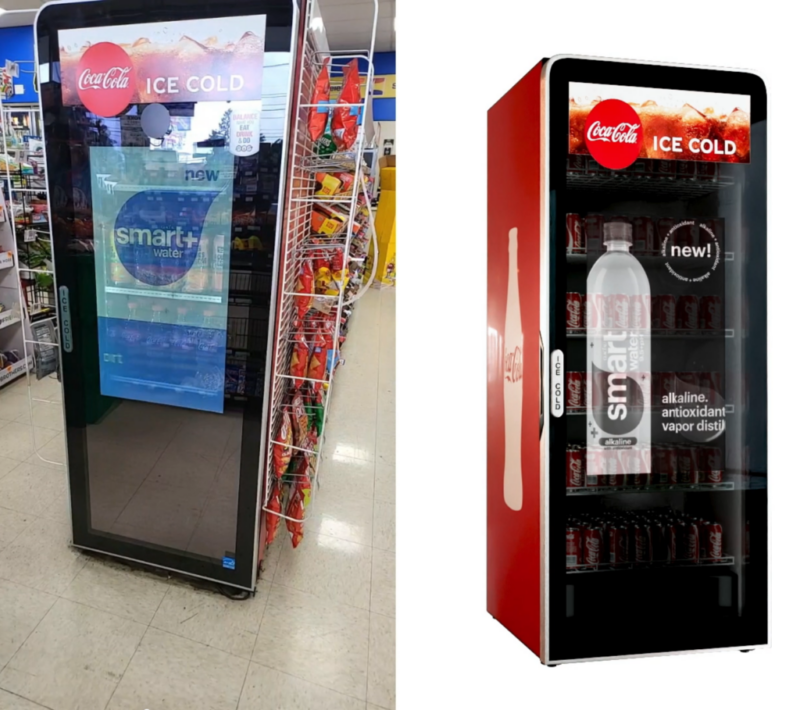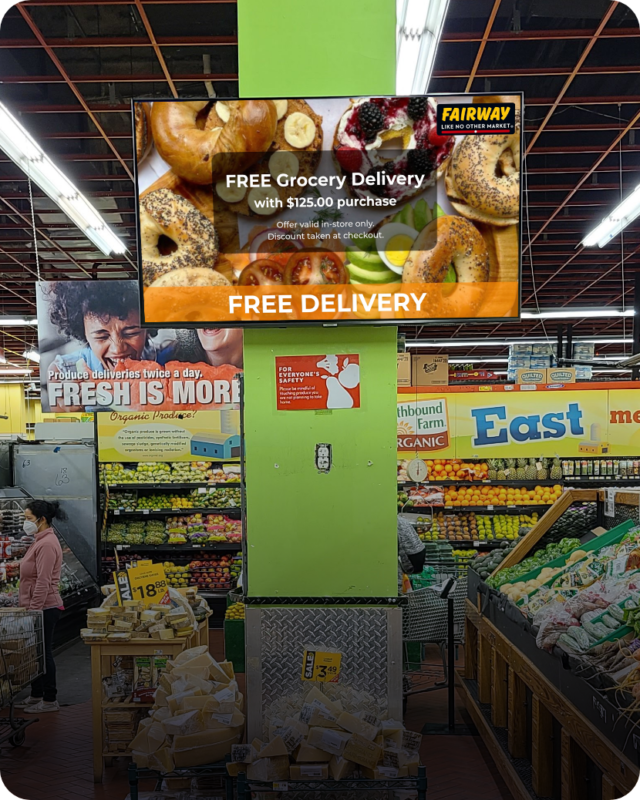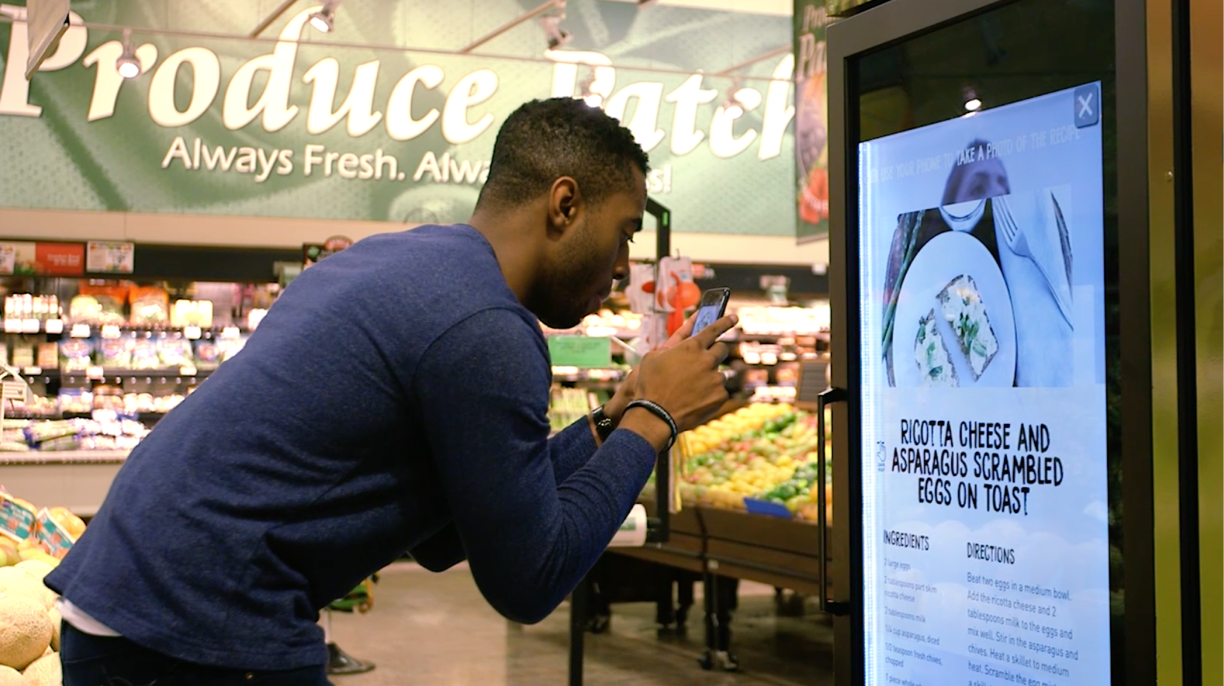The Philly retail analytics firm VSBLTY continues to operate in ways seemingly very different than competing firms that use AI and machine learning technology to measure and log consumer activity – growing out a transparent chiller display door product and acquiring a grocery-focused ad screen network.
The company has been marketing transparent LCD cooler doors for a while now, but now has a new generation of what it calls ‘edgeless’ video doors.
From PR:
This new version builds off the success of previous versions utilizing the latest AI-driven technology to deliver targeted, brand and customer specific advertisements to significantly improve product sales. The Company is also able to retrofit existing coolers with the new display panel offering a cost-effective solution for customers.
The advanced technology allows the new doors to display video over the entire surface and range from fully transparent to opaque. This now allows customers to see what products are on all shelves, a feature that was unavailable in previous technologies on the market. Content can be toggled back and forth between full color, video mode and transparent mode. The new doors have enhanced lighting for increased product visibility. Statistical data compiled by the largest soft drink manufacturers demonstrated over a 150% increase in sales when deploying this technology.

“This functionality is in great demand by all leading global beverage brands as well as other major CPG groups such as ice cream, yogurt, and other refrigerated and frozen products,” stated VSBLTY Co-founder & CEO Jay Hutton. “The ROI for the brands and retailers is enormous. Brands and retailers have experienced sales lifts year-over-year on products sold in coolers that are running video. Retailers earn additional high margin advertisment revenue along with increased product sales. We believe the cooler screen as an advertising medium is most compelling due to its large format and dominant ability to engage in real time, providing customized content, targeted to the customer standing in front of the unit”
VSBLTY’s industry leading VisionCaptor and DataCaptor technology drives the new cooler doors. VSBLTY supplies retailers and brands a full, analytics package based on anonymous computer vision data detailing store traffic, dwell times and shopper analytics including age and gender.
VSBLTY generates multiple revenue streams when a new visual cooler door is installed. Gross revenue margins on the hardware is between 25% and 30%. The Company retains between 10% and 20% of generated advertisement revenues and up to an 80% margin on the SaaS component of the technology deployed.
The company has a partnership with a major cooler door manufacturer.
VSBLTY’s core product is computer vision-based pattern detection, similar to what companies familiar to the digital signage crowd – like Quividi – have on the market. It also competes more generally with companies such as InReality and BlueZoo.






Leave a comment